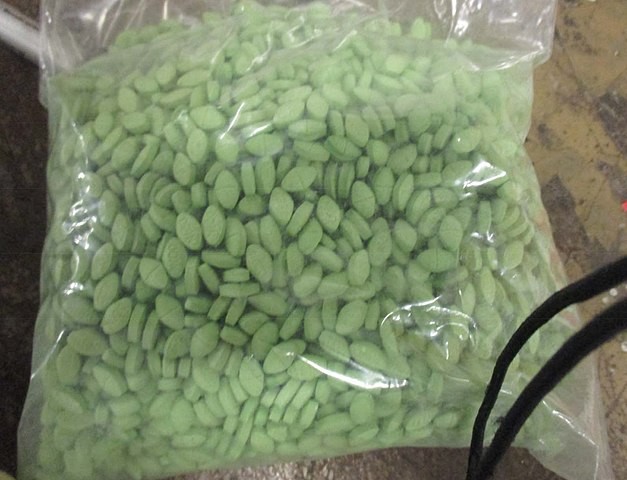The colorful pills known as the "rainbow fentanyl" have been fast becoming a famous drug in the United States.
Newsweek reported that according to a Drug Enforcement Administration press release last month, "rainbow fentanyl had been seized in 18 states."
"According to Palamar, the most common fentanyl pills have been blue counterfeit oxycodone pills labeled "M30", which were particularly dangerous not because of their color, but rather because they look like real oxycodone, which is a much weaker opioid"https://t.co/v1paLwME6J
— Joseph Palamar (@JosephPalamar) September 23, 2022
The DEA said it was worried that the candy-like appearance and bright colors of the drugs might be intentional in an initiative to sell the highly addictive drugs to young individuals or even children.
According to Anne Milgram, DEA Administrator, fentanyl pills and power come in various colors, sizes, and shapes is a deliberate initiative by drug traffickers to drive addiction among the younger generation.
ALSO READ: Drinking Water and Eating: Not Remedies for Hangover

Pill products are laced with the highly-potent opioid fentanyl.
Fentanyl, a Synthetic Opioid Drug
The DEA press release also said that the women of the drug administration are relentlessly working to combat the trafficking of rainbow fentanyl and beat the Mexican drug cartels that are accountable for the vast majority of the fentanyl currently being trafficked across the nation.
This media report describes fentanyl as a "synthetic opioid drug," frequently described as a pain reliever. Based on the DEA fact sheet, fentanyl is addictive and is approximately 100 times more potent than morphine and 50 times more potent than heroin.
While relieving pain, fentanyl binds to the opioid receptors of the body, which also leads to symptoms of drowsiness, sedation, extreme happiness, or unconsciousness.
This drug is not the first time that drugs have appeared in different colors compared to normal. Associate professor at New York University Langone Medical Center's Department of Population Health Joseph Palamar said colored fentanyl pills have been going around for quite some time.
What the Pill Colors Depict
Possibly, the different colors depict different doses. Therefore, the pill's color might be a factor, as well.
Because of its addictive quality, fentanyl may result in overdose and, possibly, even death. The National Institute on Drug Abuse or NIDA said that synthetic opioids such as fentanyl are the most common drugs involved in drug overdose fatalities across the nation, with 59 percent of opioid-related deaths involving fentanyl in 2017.
This was a remarkable rise from the 14.3 percent seen in 2010. According to Palamar, they discovered that not only fentanyl has been increasing, but the proportion of pills confiscated to overall fentanyl seizure has also been increasing.
The proportion of pill seizures, particularly, rose from 14 percent in early 2018 to 2019 in late 2021. Palamar also explained that the most common pills had been blue counterfeit oxycodone pills with the label "M30," which are specifically dangerous not because of their color but because of their look, such as real oxycodone, a much weaker opioid.
Fentanyl Overdose
Sometimes, other drugs like cocaine or MDMA are mixed with lower-priced fentanyl, which may mean that a fentanyl overdose, with detailed information reported on the Centers for Disease Control and Prevention website, may take place without the person knowing it is fentanyl.
Medical experts said naloxone could be used for fentanyl overdose treatment if administered right away. Furthermore, withdrawal from the drug is quite unpleasant, making it difficult for people to quit after becoming addicted.
The NIDA said such symptoms might include bone and muscle pain, diarrhea, sleep problems, cold flashes with goosebumps, severe cravings, and uncontrollable leg movements.
Related information about Fentanyl overdose is shown on CBD Los Angeles's YouTube video below:
RELATED ARTICLE: Antibiotics Taken During Infancy May Affect a Person's Gut Health in Adulthood
Check out more news and information on Medicine in Science Times.

![Extinct Giant Salmon Had Tusk-Like Spikes Protruding Out of Its Snout That Can Easily Kill Shark, Other Large Marine Animals [Study]](https://1721181113.rsc.cdn77.org/data/thumbs/full/53304/89/56/50/40/extinct-giant-salmon-had-tusk-like-spikes-protruding-out-of-its-snout-that-can-easily-kill-shark-other-large-marine-animals-study.png)












